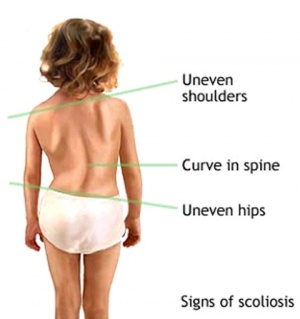Title: Understanding and Managing Scoliosis: A Compassionate Approach
Introduction:
At Physio Needs Academy, we are dedicated to offering guidance and support to individuals and families dealing with scoliosis—a condition characterized by an abnormal curvature of the spine. Our mission is to provide valuable insights into scoliosis, its types, causes, and clinical presentation, and to empower you with knowledge on managing this condition.
Understanding Scoliosis:
Scoliosis is a deviation from the normal spine curvature, which typically includes a curve at the top of the shoulders and one in the lower back. When the spine curves from side to side, forming an “S” or “C” shape, scoliosis may be present. It is often diagnosed in childhood, and common causes include birth defects, neurological abnormalities, and genetic conditions.
Common Types of Scoliosis:
The most prevalent type of scoliosis is idiopathic scoliosis, a term used when no specific cause is identified. Idiopathic scoliosis is further categorized by age:
- Infant (0-3 years)
- Juvenile (4-10 years)
- Adolescent (11-18 years)
- Adult (18+ years)
Causes of Scoliosis:
Scoliosis can result from various causes:
- Congenital: Spinal deformities apparent at birth, often linked to birth defects like spina bifida.
- Neurological: Nerve abnormalities affecting spine muscles, associated with conditions such as cerebral palsy and muscular dystrophy.
- Spinal Injury or Infections: Trauma or infections can contribute to scoliosis development.
- Family History: Individuals with a family history are at a higher risk, and girls are more likely to experience severe forms.
Clinical Presentation:
Adolescent idiopathic scoliosis presents several signs:
- Sideways curvature of the spine
- Uneven body posture
- One shoulder raised higher than the other
- Clothes not fitting properly
- Local muscular and ligament discomfort
- Concerns about decreasing pulmonary function in severe cases
Examinations:
- Active Movements: Assessment of spine flexibility in cervical, thoracic, and lumbar regions.
- Adam Forward Bend Test: Helps differentiate between structural and non-structural scoliosis.
- Cobb Angle: A standard measurement for scoliosis progression tracking.
- Scoliometer: Measures trunk asymmetry, aiding in diagnosis.
- Pulmonary Function Testing: Evaluates lung function and is essential in preoperative assessments.
Conclusion:
At Physio Needs Academy, we believe in a compassionate approach to scoliosis. Understanding the condition, its causes, and clinical signs is essential for early diagnosis and management. We are committed to providing you with the knowledge and support needed to navigate the challenges of scoliosis. Our aim is to empower individuals and families to make informed decisions and ensure the best possible outcomes for those affected by this condition.

